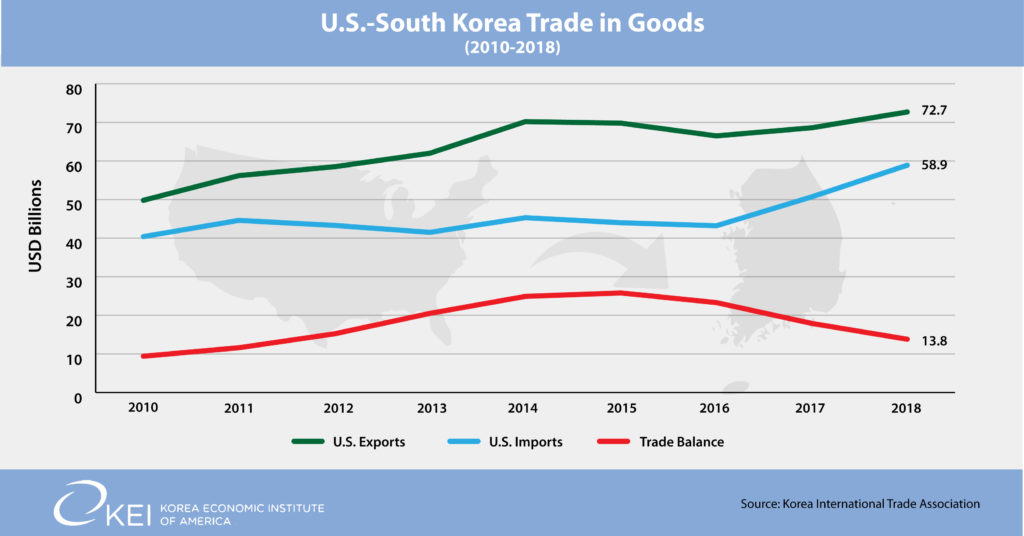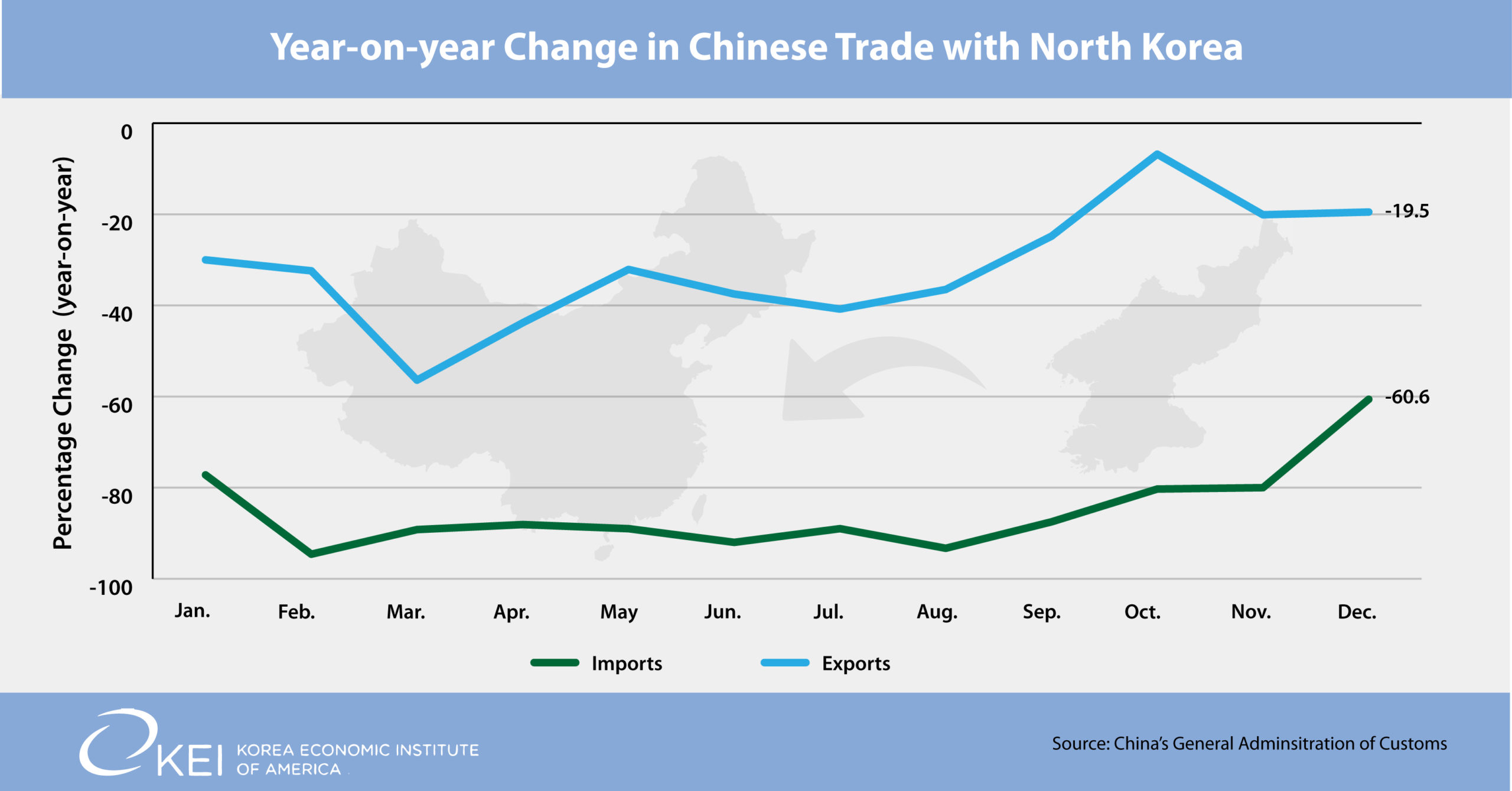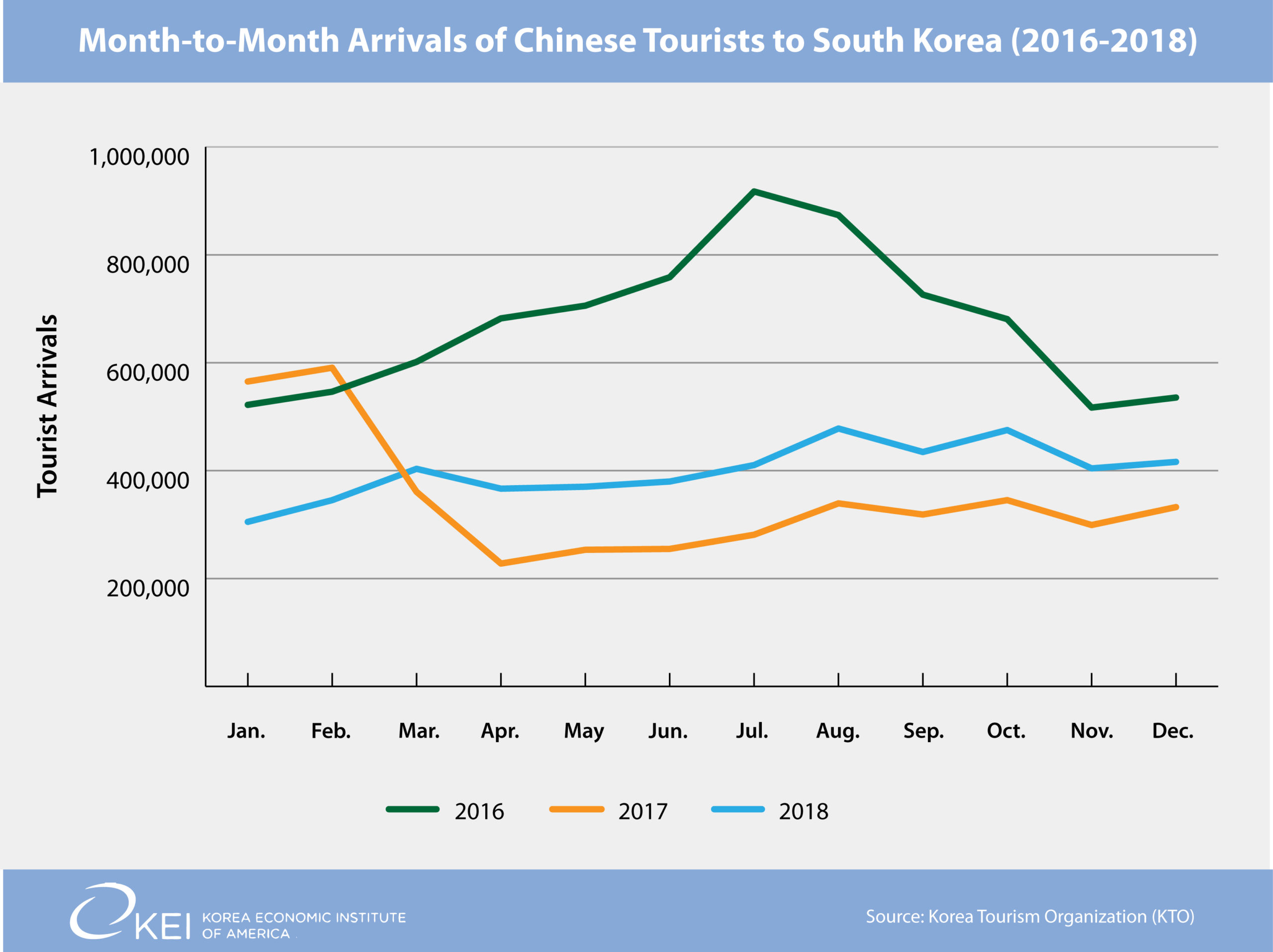The Peninsula
2018 in 5 Charts: The Korean Peninsula Edition
Published February 14, 2019
Author: Troy Stangarone
Category: North Korea, South Korea, China, Economics

By Troy Stangarone
In short, 2018 was the year of summits. After essentially being ostracized for his entire reign, Kim Jong-un became the first North Korean leader to meet with a sitting U.S. president while also meeting with Chinese President Xi Jinping and South Korean President Moon Jae-in on multiple occasions. While the summits drew much of the year’s attention, data is less robust on the summits than some of the other key issues on the Peninsula – such as trade, sanctions, and the value of North Korea’s cryptocurrency. Now with the first full month of 2019 behind us, here’s how some of those issues looked through the lens of data behind them.
U.S. Trade Deficit with South Korea Continues to Decline
When the United States and South Korea originally negotiated the KORUS FTA the expectation was that the United States’ trade deficit with South Korea would decline. That didn’t happen. Instead, the trade deficit in goods grew from $11.6 billion the year before the agreement was implemented to a high of $25.8 billion. Once in office, one of the initial objectives of the Trump administration was to push to renegotiation the agreement to bring the trade deficit down. While those talks concluded in March of last year and the revised agreement went into effect at the beginning of 2019, the U.S. trade deficit with South Korea has now declined for three consecutive years ending last year at $13.8 billion.
Semiconductor Super-cycle Comes to an End
For much of 2017 and 2018, a rapid rise in prices and demand for memory chips helped to boost the profits of Samsung and SK Hynix, which produce about 75 percent of the world’s memory chips. Samsung and SK Hynix weren’t the only ones to benefit from the boom in semiconductors as growth in semiconductor exports helped to drive growth in South Korean exports. In 2017, 40 percent of the growth in South Korean exports can be accounted for from rising exports of semiconductors. With demand in China, South Korea’s largest export market for semiconductors falling, the current cycle seems to be coming to an end.
Are Sanctions on North Korea Working?
As North Korea conducted a series of missile and nuclear tests in 2016 and 2017, the international community placed a series of economic sanctions on North Korea. Key to sanctions placing pressure on North Korea to return to talks over its weapons programs was enforcement by China, North Korea’s most important trading partner. According to official Chinese data, trade over the last year has dropped off significantly. While North Korea’s exports to China have fallen off fairly significantly, its imports from China have seen a less steep decline and in October were barely down from the prior year. For 2019, this raises two questions: how has North Korea been able to maintain its imports from China and will it be able to continue to do so in 2019 absent sanctions relief?
Has North Korea Benefited from Stealing Cryptocurrency?
Early in 2018, North Korea hacked Coincheck, a cryptocurrency exchange in Japan, and reportedly was able to steal over $500 million. According to Group IB, North Korea is responsible for a significant majority of the money that has been stolen from cryptocurrency exchanges over the last two years, including a hack in South Korea of Yapzion in 2017. While it is unclear if North Korea has used the cryptocurrency it has stolen, if the regime held onto that currency throughout 2018 the value of the bitcoin it stole from Yapzion would have fallen by 72 percent and the NEM from its hack of Coincheck in Japan would have fallen by over 90 percent.
The Lingering Hangover of THAAD
Despite having agreed to normalize economic relations in October of 2017 after the fallout over the deployment of THAAD, Chinese tourism is still lagging behind its pre-THAAD numbers. While numbers finally pushed back over 400,000 Chinese tourists a month in July after originally falling below that threshold for 16 consecutive months, the total number of Chinese tourists visiting South Korea in 2018 was still 40 percent below the pre-THAAD total of 2016.
Troy Stangarone is the Senior Director for Congressional Affairs and Trade at the Korea Economic Institute of America (KEI). The views expressed here are the author’s alone.
Official White House Photo taken by Joyce N. Boghosian, sourced from Wikimedia Commons.




